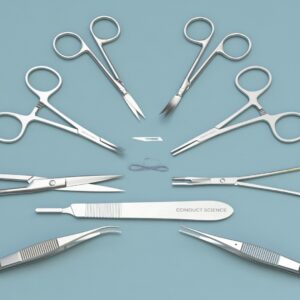$3,190.00
The von Frey monofilament, introduced by Maximilian von Frey in 1896, serves as an esthesiometer for measuring mechanical nociception. These filaments are extensively used to evaluate responses to mechanical stimuli, particularly in assessing punctuating mechanical allodynia and hyperalgesia. The method involves applying von Frey filaments with forces ranging from 0.08 mN to 2940 mN to the subject’s skin and recording the withdrawal thresholds. This assessment can be carried out manually or with an electronic von Frey apparatus.
The most frequently employed technique is the up-down method, where the filaments are applied perpendicularly to the plantar surface of the subject until they bend. However, this method can be quite time-consuming. To address the limitations of manual testing, the electronic von Frey (EvF) has been developed. The EvF offers several advantages over traditional methods, including the ability to use a single filament to apply a range of pressures. Additionally, unlike tests such as the Randall-Selitto test, the von Frey monofilament method does not require subject restraint. This reduces the potential for handling and restraining-related anxiety, which could otherwise affect the results.

MazeEngineers empowers preclinical neuroscience research with meticulously designed, customizable behavioral apparatuses. From manual classic mazes to fully automated smart systems, we provide the tools scientists need to capture high-quality, reproducible data for studies on learning, memory, anxiety, and depression.



The von Frey monofilament was designed by Maximilian von Frey as an esthesiometer in 1896. These filaments have been widely used in the assessment of mechanical nociception. The process of assessment of punctuating mechanical allodynia and hyperalgesia involves the application of von Frey filaments of forces ranging anywhere from 0.08 mN to 2940 mN and observing the withdrawal thresholds. The assay can be performed manually or by using an electric von Frey.
The most commonly used method is the up-down method, wherein the tips are smoothly applied perpendicularly to the skin of the plantar surface of the subject until they buckle. However, the technique tends to be time-consuming. The electronic von Frey (EvF) is used to overcome the disadvantages of the conventional von Frey assay. The former has many advantages over the manual von Frey assay, primarily, the use of a single filament to apply varying levels of pressure. Further, unlike other tests such as the Randall-Selitto test, the von Frey monofilament assay does not require restraining the subject. This approach minimizes handling and restraining anxiety which could otherwise potentially influence the performance of the subject.
Range of Forces: Monofilaments are available in different thicknesses and force levels, allowing sensitivity testing from very low to higher pressure levels, making them suitable for various pain conditions.
Reproducibility: The use of these filaments provides reproducible and consistent results in assessing mechanical sensitivity, which is crucial for comparative studies.
Ease of Use: Both the manual and electronic methods are relatively easy to use, making them applicable in research laboratories and clinical settings.
Portability: The monofilaments are lightweight and easy to transport, allowing tests to be conducted in different environments and with various subjects without the need for heavy equipment.
Minimal Interaction: The non-invasive nature of the method allows for sensitivity evaluation without causing additional pain or significant stress to the subject, which is especially important in studies involving animals.
Quantitative Assessment: It allows not only the observation of withdrawal thresholds but also quantifies the degree of mechanical hypersensitivity, facilitating statistical analysis of the data.
Flexibility in Application: The filaments can be used on various body areas, not just the plantar surface, enabling nociception assessment at different sites.
Clinical and Preclinical Studies: Von Frey monofilaments are utilized in a wide range of studies, from basic research to clinical trials, making them a versatile tool in pain assessment.
Temporal Change Analysis: The ability to perform repeated tests on the same subject allows for the evaluation of changes in mechanical sensitivity over time, useful for studying disease progression or treatment responses.
| Brand | MazeEngineers |
|---|
You must be logged in to post a review.
There are no questions yet. Be the first to ask a question about this product.
Reviews
There are no reviews yet.